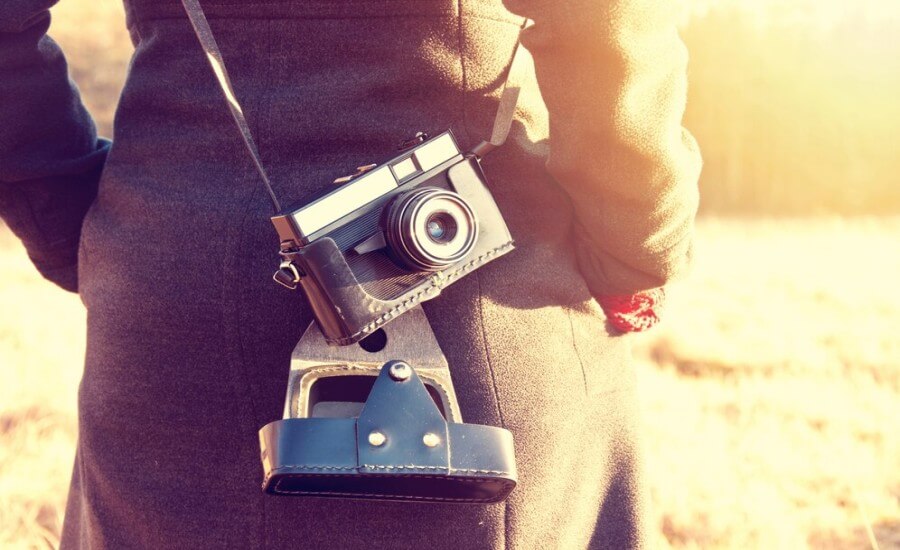The evolution of digital cameras is a remarkable journey that reshaped the way we capture and share memories. From bulky, low-resolution models to the sleek, high-performing cameras in smartphones, digital photography has undergone a massive transformation. As technology advanced, the transition from film to digital formats revolutionized photography for both professionals and casual users alike. The journey didn’t just change how photos were taken—it redefined the culture of photography. Whether it’s the birth of CCD sensors, compact memory storage, or smartphone integration, each step in the evolution of digital cameras marked a technological milestone. This article explores the history, innovation, and future of digital cameras, emphasizing how they became a vital part of modern life.
From Pixels to Portable Power: The Digital Camera’s Revolutionary Journey
The Beginning: Early Concepts and Innovations
The concept of digital photography started taking shape in the 1960s, well before the phrase “digital camera” became widely used, the idea of digital photography was emerging in the 1960s. The initial major breakthrough took place in 1969 when Willard Boyle and George E The charge-coupled device (CCD), a crucial part that transforms light into digital impulses, was created by Smith. This established the groundwork for digital imaging.
In the mid-1970s, Kodak engineer Steven Sasson created the initial prototype of a digital camera featuring a CCD sensor. It captured black-and-white images on a cassette tape with a resolution of just 0.01 megapixels. Although revolutionary, this camera was never released to the public. Ironically, Kodak put the technology on hold because they thought it might threaten their film industry.
The 1990s: The First Consumer Digital Cameras
The 1990s saw the commercial launch of digital cameras. Fujifilm and Kodak released the first models aimed at consumers:
- Dycam Model 1 (1990): One of the first commercial digital cameras, the Dycam Model 1 (1990) took grayscale pictures.
- Apple QuickTake 100 (1994): Developed by Apple in partnership with Kodak, it was among the first color digital cameras for consumers.
- Casio QV-10 (1995): This camera introduced a built-in LCD screen, changing how users interacted with digital photography.
These early cameras had limited resolution (usually below 1 megapixel) and small internal memory. Yet, they were groundbreaking at the time, offering the ability to instantly review images without developing film.
The 2000s: The Digital Boom
In the 2000s, digital camera technology progressed rapidly. Major camera manufacturers like Canon, Nikon, and Sony began to dominate the market with high-resolution compact and DSLR (Digital Single-Lens Reflex) cameras. Some key advancements during this period included:
- Megapixel Race: Camera makers competed to offer higher resolutions, moving from 2MP to over 10MP within a few years.
- Storage Advancements: Memory cards like SD and CompactFlash enabled users to store hundreds of photos without needing film rolls.
- DSLR Revolution: Digital SLRs became popular among professionals and hobbyists, delivering excellent image quality and interchangeable lenses.
- Improved Image Processing: Faster processors and better image sensors led to clearer, more vibrant images.
Digital photography became affordable, accessible, and efficient, making film cameras nearly obsolete in mainstream use.
Smartphones Enter the Scene
The biggest disruption in the evolution of digital cameras came with the rise of smartphones. In the mid to late 2000s, cameras started to be included in mobile phones. Initially a novelty, mobile cameras soon became powerful enough to rival point-and-shoot cameras.
Apple’s iPhone, launched in 2007, catalyzed this transformation. Each subsequent model introduced significant camera upgrades, including features like:
- High-resolution sensors
- Auto HDR and Night Mode
- Portrait and cinematic modes
- Multiple lenses (ultra-wide, telephoto, etc.)
Google, Samsung, and other manufacturers followed suit, investing heavily in computational photography using AI and software to enhance image quality.
By the 2010s, smartphone cameras overtook digital compact cameras in popularity and usage. Convenience, connectivity, and instant sharing through social media platforms made smartphones the default camera for billions worldwide.
Mirrorless Cameras: The Future of High-End Photography
While smartphones dominate casual photography, professionals sought innovation elsewhere. Enter mirrorless cameras, combining the best of DSLR performance with compact, lightweight design.
Mirrorless cameras eliminate the internal mirror mechanism found in DSLRs, enabling faster autofocus, electronic viewfinders, and real-time previews. Sony, Fujifilm, Canon, and Nikon now produce powerful mirrorless systems that are shaping the future of high-resolution, high-speed photography.
These cameras offer:
- 4K and 8K video recording
- Full-frame sensors
- Exceptional low-light performance
- In-body image stabilization
Today, both DSLR and mirrorless formats are widely used, though mirrorless is gaining more traction due to its innovation and adaptability.
Impact on Society and Culture
Digital cameras revolutionized photography and transformed our methods of communication. Social media, vlogging, citizen journalism, and real-time sharing would not exist without digital imaging technology. The advancement of digital cameras has made content creation accessible to all, enabling individuals ranging from influencers to activists to visually share their narratives.
Apps like Instagram, TikTok, and Snapchat are rooted in the evolution of digital imaging. They’ve reshaped how people perceive photography—not as an art reserved for professionals, but as a language for everyday expression.
What Lies Ahead?
The future of digital cameras is likely to be shaped by AI, augmented reality, and even more compact yet powerful designs. Advancements to look out for include:
- Photography augmented by artificial intelligence for immediate scene identification and subject monitoring
- Integration with AR and VR
- In-camera editing and cloud syncing
- Foldable lens systems in smartphones
- Quantum dot sensors offering unmatched image fidelity
As technology continues to evolve, so will the role of digital cameras in our lives—bridging the physical and digital worlds more seamlessly than ever before.
Conclusion
The evolution of digital cameras is a story of relentless innovation and cultural change. From grainy images captured on early CCD sensors to today’s high-definition smartphone photography, digital cameras have redefined how we see and share the world. What began as a scientific experiment has grown into a universal tool for creativity, communication, and storytelling.
Curious about the future of photography? Explore the world through your lens and be part of the next chapter in the evolution of digital cameras!






